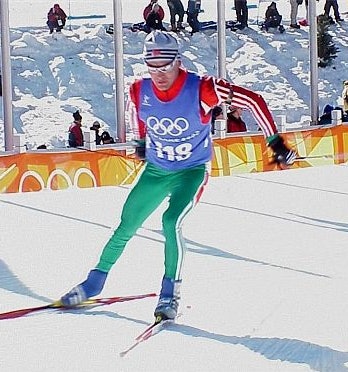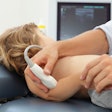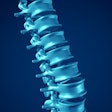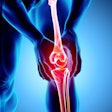
SALT LAKE CITY - Anterior cruciate ligament tears have made up the majority of injuries seen by radiologists at the Polyclinic during the first week of the 2002 Olympic Winter Games. It’s not so surprising, given the tenuous construction of the knee joint and the tendency of skiers and ice skaters to land hard on them.
"The most dramatic injuries have been in the knee, where people have acute ACL tears," said Dr. Ken Buckwalter, an associate professor at the Indiana University School of Medicine in Indianapolis and the section chief of musculoskeletal imaging. He started his run at the Polyclinic on February 10. "Large bone bruises, ruptures of their joints, ruptures of their ligaments, tears of the menisci. I saw one skier with an acute bucket-handle tear. He had a locked knee."
Skiers and their knees seem to have a contentious relationship, and many of the Olympians arrived in Salt Lake City with pre-existing conditions. Freestyle men’s mogul skier Evan Dybvig took a spill last week after his run in Park City. He arrived at the Polyclinic with a large brace on his right knee and was sent off for an MRI.
It wasn’t the first time Dybvig’s knees have given him trouble: Two years ago, during a competition in Zurich, Dybvig sustained a spiral fracture to the fibula. He eventually underwent an ACL reconstruction in the same leg.
 |
| Competitive skiing puts a major strain on knees, with ACL tears particularly common. |
Kari Traa of Norway, the 2002 gold medal winner in women’s mogul skiing, blew out her knee in 1994 during the World Cup in Sweden. Traa crashed during a practice run and sustained an ACL and meniscus tear to her left knee. She subsequently had six different surgical procedures on her knees. Last year, an MRI revealed a disc problem in her back.
One aspect of imaging these high-caliber athletes that the Polyclinic radiologists have come up against is the presence of previous injuries that have gone untreated.
"We had one patient who had a neglected lateral process talus fracture. It’s a difficult diagnosis to make, and this is one that was missed, unfortunately," said Dr. Julia Crim, the University of Utah radiologist who is serving as chief of musculoskeletal radiology at the Polyclinic. "When this person came in complaining of ankle pain, you could see he had a nonunited fracture, and that he’d already gone on to end-stage osteoarthritis. He also had a large loose body in one of his tendon sheaths, but he still wanted to compete."
Of course, injuries are not just reserved for the lower body. Swiss hockey defense player Edgar Salis arrived at the Polyclinic with a blackened left eye after a particularly boisterous match against the team from the Ukraine (both teams sustained 44 penalties during the game, which ended with a 5-2 Ukrainian victory). He underwent a CT exam at the University of Utah Hospital, just up the road from the Polyclinic.
South Korean short-track speed skater Min Ryoung wound up in a collision that sent him careening into the rink wall. He had a CT exam at Latter Day Saints Hospital in Salt Lake City, which revealed a concussion.
Most recently, Canadian Alpine skier David Anderson crashed during a training accident after he hit a cable on a snow-grooming machine. Anderson was airlifted to Latter Day Saints Hospital, where multiple imaging exams, including x-ray, MR, and CT revealed soft-tissue injuries, several bumps and bruises, and a concussion. Anderson was able to compete in the Super-G downhill race on Saturday.
By Shalmali Pal
AuntMinnie.com staff writer
February 18, 2002
Copyright © 2002 AuntMinnie.com


















